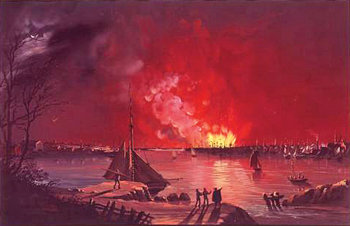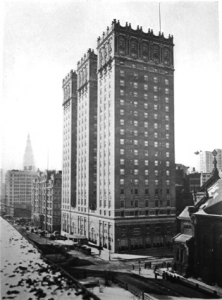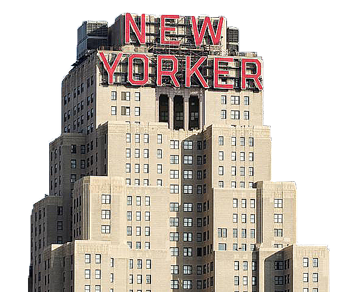Trending
This month in real estate history
This month in real estate history

1835: Massive blaze destroys Lower Manhattan
A massive blaze leveled 17 blocks of lower Manhattan 182 years ago this month. The Great Fire of 1835 — which created a glow that could be seen from as far as Philadelphia — burned between 530 and 700 buildings before it was stopped. Night watchmen discovered the fire in a warehouse at the corner of Pearl and Exchange streets a little after 9 p.m., but throughout the evening firefighters struggled to put the blaze out, according to the New Yorker. The sidewalks were buried in two feet of snow and the East River was frozen, so workers had to break the ice to get to the water below. The water that firefighters were able to access froze in their hoses, so they opted to contain the fire by demolishing the buildings in its path. Though the blaze killed just two people, it caused between $20 million and $40 million worth of damage, or $472 million to $944 million today. Claims bankrupted all but three of the 26 insurance companies based in the city. Many of the wooden structures destroyed in the fire were replaced by larger stone and brick buildings, and the city built the Croton Aqueduct to supply water from Westchester County.

The Vanderbilt Hotel
1907: Plans filed for Vanderbilt Hotel
Architects filed plans for what would become the Vanderbilt Hotel on Park Avenue between 33rd and 34th streets, the New York Times reported 110 years ago this month. The tower was originally designed as an office building, with ground-floor retail and four floors of manufacturing lofts, but it opened instead as an extravagant hotel five years later. Grand Central Terminal architects Warren & Wetmore designed the 21-story tower with three separate vertical masses connected by a common base. The firm stuck to its original plans to trim the building with terra cotta and kept to the refined Beaux-Arts style popular at the time. Alfred G. Vanderbilt I, the hotel’s namesake, wouldn’t live long after his hotel opened — he died on the ill-fated RMS Lusitania, sunk by a German U-boat in 1915. The building, at 4 Park Avenue, still stands but has since been converted to residences.
1967: Hilton buys New Yorker Hotel at foreclosure auction

The New Yorker Hotel
The Hilton Hotels Corporation scooped up the troubled New Yorker Hotel for $5.6 million at a foreclosure auction 50 years ago this month, according to the New York Times. It was Hilton’s second time purchasing the property, which the firm had first bought in 1953 and then sold for $20 million three years later. By 1967 the hotel’s popularity waned, and its owners fell behind on $21.5 million in debt payments — which included $5.1 million owed to Hilton. The hotel group bought the building because the area was “coming back to life” with the recently opened Madison Square Garden arena and new office projects nearby. But Hilton couldn’t turn its fortune around and closed the hotel in 1972. The Unification Church purchased the building three years later and converted it for use by its members. In 1999, the religious organization reopened the building as a hotel, and today it operates under the Wyndham Hotels & Resorts flag.




